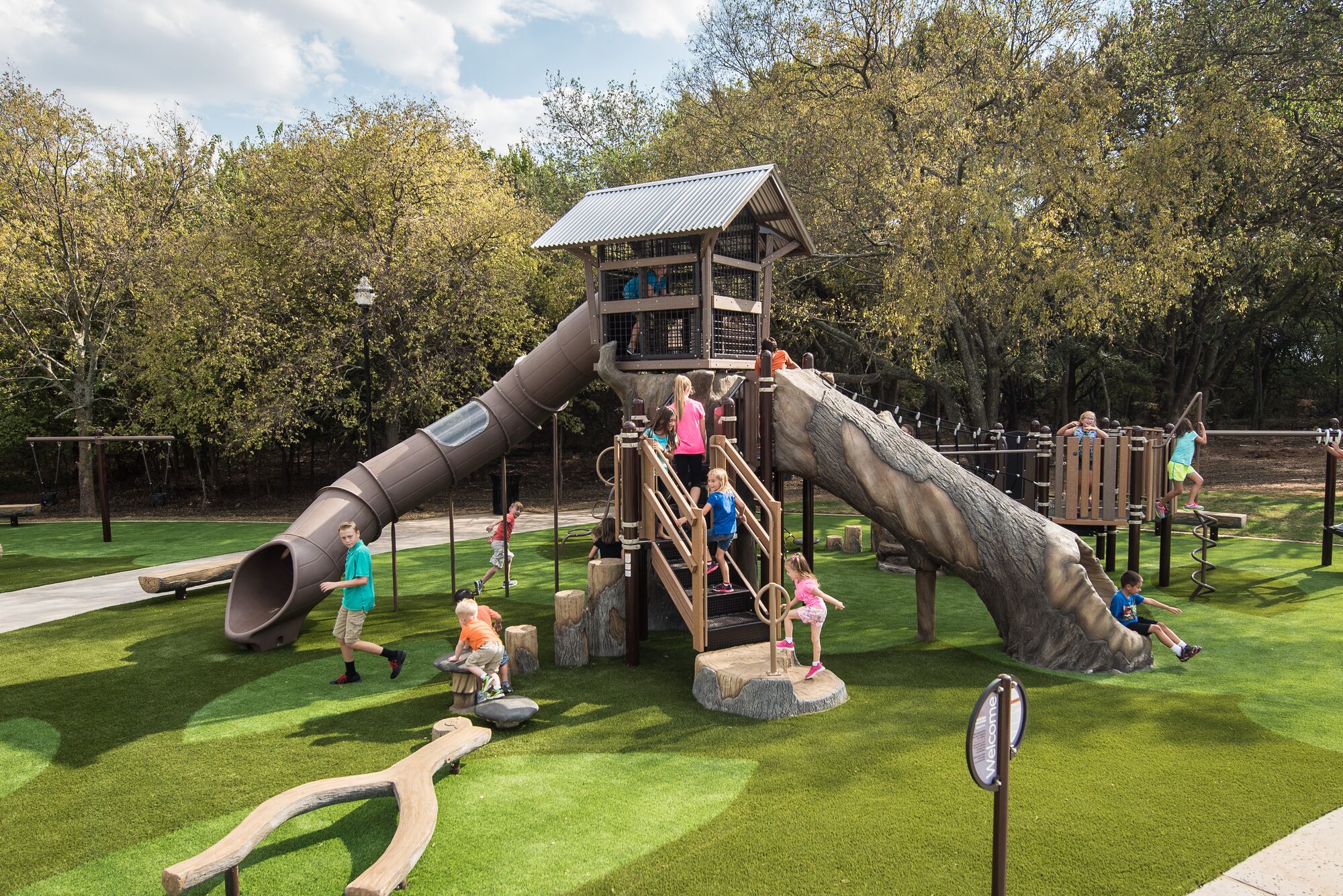Design Considerations When Planning Your Playground
Introduction
Playgrounds are vital because they support holistic child development by providing opportunities for physical activity, cognitive stimulation, social interaction, emotional growth, and sensory exploration. They contribute to healthy, well-rounded individuals and vibrant communities.
Designing your perfect playground involves a thoughtful process to ensure that it aligns with your goals, current safety standards, and the needs of your community. The design and planning process will require not just the selection of your playground equipment, but an assessment of the site, your visitors and their needs, and the design elements that you want to define the character of your playground.
Playground Planning Design Considerations:
Community Needs Assessment
You can begin your planning process with an assessment of your community needs. The first step in this assessment is to determine the demographics of the visitors to your playground. Do you need to plan for adults interested in fitness activities? Do you need to accommodate group sports activities, such as basketball or tennis? What is the age range of the children who will use the playground? Tailoring equipment to specific age groups ensures that your visitors can engage in age-appropriate challenges and activities. For example, for children ages 2-5, you will want equipment that is scaled appropriately with climbing activities that are close to the ground, but for children ages 5-12, you can include more challenging equipment like towers and climbing walls. Deciding what age groups you want your playground to welcome will help narrow down the choices of equipment and make the selection process easier.
The number of children and adults expected to visit your playground must also be considered. If you anticipate large numbers of visitors, you will need to consider design elements such as entrances and exits to aid in the traffic flow. You will want to select equipment that has higher play value, for example, the Crab Trap® which can accommodate up to 65 children at one time. Incorporating the concept of continuous play (connecting various play components together to form a continuous play opportunity for kids) can dramatically increase the play value, even in smaller playgrounds.
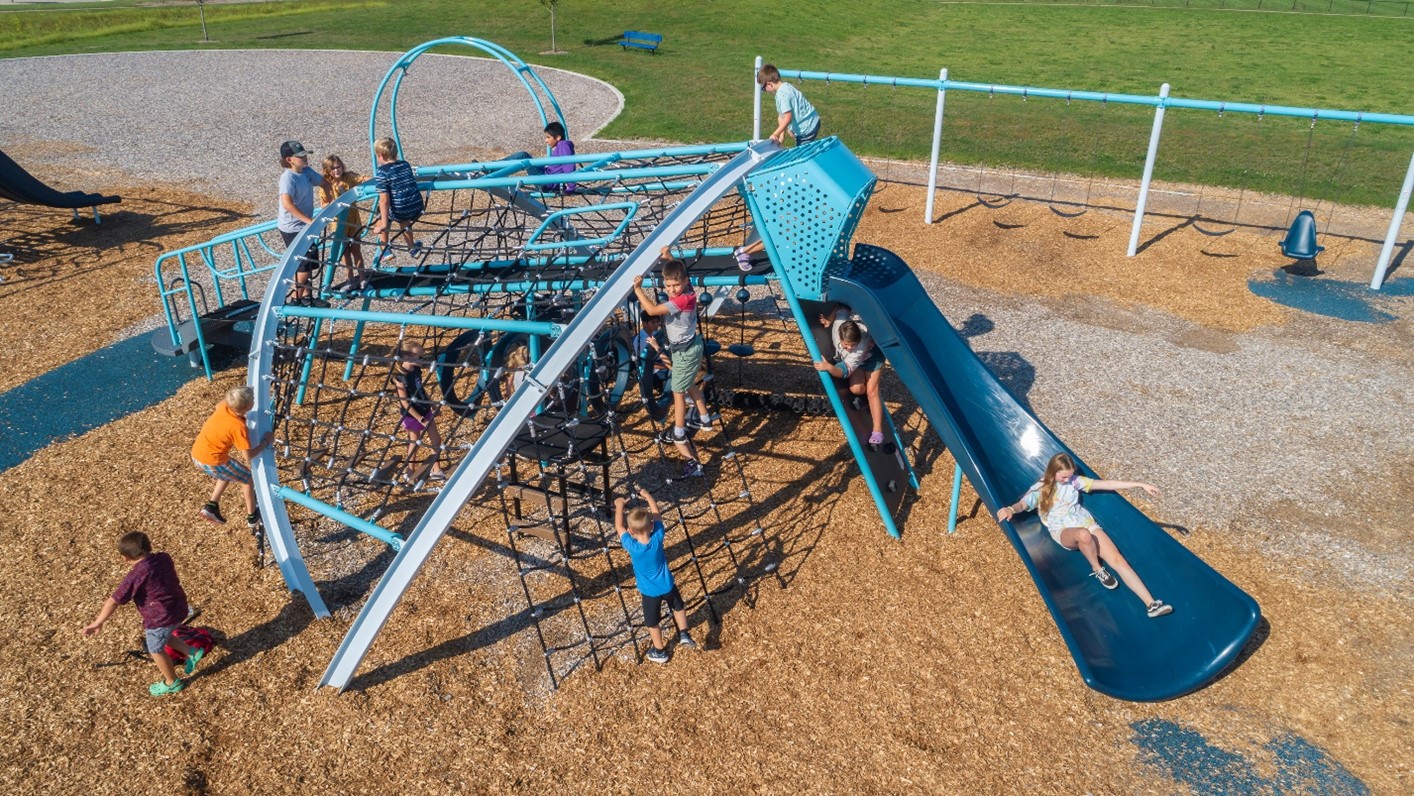
Think about the specific needs of the people in your community. Determine if you require inclusive equipment for children or their caretakers with disabilities or any other unique requirements. Inclusive equipment ensures that children of all abilities can play together, promoting social interaction and empathy. While all public playgrounds must meet the minimum requirements determined by the Americans with Disabilities Act (ADA), inclusive playgrounds go beyond. This could include sensory stimulating activities such as a sand station or rollerslide and having ramps and transfer points or smooth surfacing to make participating on the playground easier for those who require mobility devices.
Do not forget to plan for the adult visitors. Parents and caretakers may need a place to rest in the shade while they supervise their children playing. Moms may have younger siblings in a stroller that would be hard to push over some types of surfacing. Grandparents may have mobility issues that make uneven walking surfaces or steep slopes difficult to navigate. And how about planning spaces where the generations can interact with each other: tables where they can gather, play equipment that accommodates all ages, or natural settings where outdoor learning can take place?
Get your community members involved in the needs assessment. Seek their feedback to secure community member and leadership buy in. Community buy-in can contribute to the success of your project, particularly if fundraising is needed.
Site Planning Considerations
One you have completed the needs assessment, consider your space and location. First, measure the available area for the playground. Each piece of equipment will have its own use zones required to meet safety standards, so understanding how much space you have available is critical.
Next, you should consider the terrain, surroundings, and climate of your intended play space. Is there existing vegetation that can be incorporated into your design? A level surface is ideal for a playground to ensure safe and stable footing, but if you are dealing with hills, you might consider play equipment designed to work with those slopes rather than choosing to level the terrain.
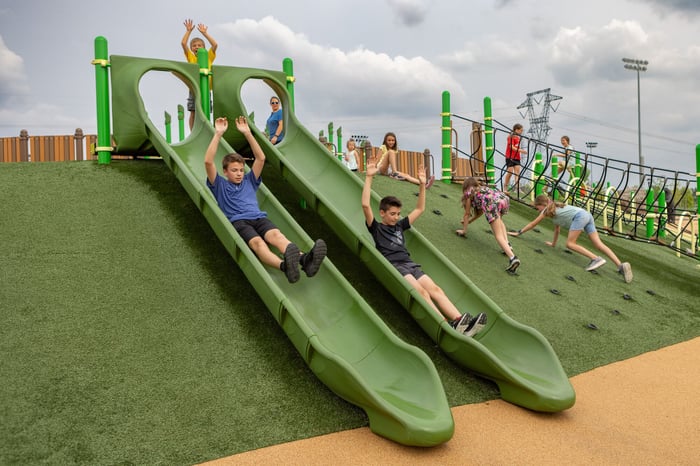
Give some thought to the local weather conditions, such as extreme heat or frequent rain, and choose equipment that can withstand these elements. If your playground is in a location with hot summers and limited natural shade, you might want to consider steel equipment that comes with built-in shade. Heavy rainfall can be damaging to equipment made of unfinished metal and wood, so if your playground might experience frequent rain, you will want to consider using metal finished with a coating.
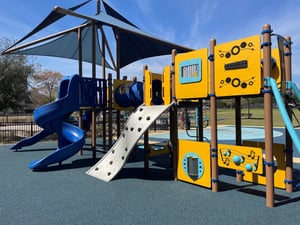 Is the playground located near existing amenities such as parking, restrooms and walking/biking paths and do these need to be included or added to your design?
Is the playground located near existing amenities such as parking, restrooms and walking/biking paths and do these need to be included or added to your design?
When a playspace is meant to serve the community for years to come, an accurate site assessment is critical. A landscape architect, engineer or playground expert can assist you!
Additional Design Considerations
Playgrounds can include a wide range of equipment to suit various play experiences and developmental needs. Here are some additional design considerations to help you finalize your playground plan:
- Do you want your playground to have a modern look, mimic the environment or carry out a specific theme? Color is an incredibly powerful element that has a profound impact on our mood and behavior. It possesses the ability to evoke a wide range of emotions, from instilling a sense of calm and relaxation to generating feelings of energy and exhilaration. Childrens’ developing brains are particularly sensitive to the colors in their surroundings. Consequently, when designing a playground, the selection of colors should be a deliberate and thoughtful process, aiming to create the precise tone and atmosphere that aligns with your playground's objectives and purpose.
- Do you want to add fitness playground elements to your design? These equipment pieces encourage physical activity and help kids build strength and stamina. They often include features like climbing walls, balance beams, and exercise stations. Fitness playgrounds are a great way to capitalize on staying physically fit while enticing everyone to exercise outdoors.
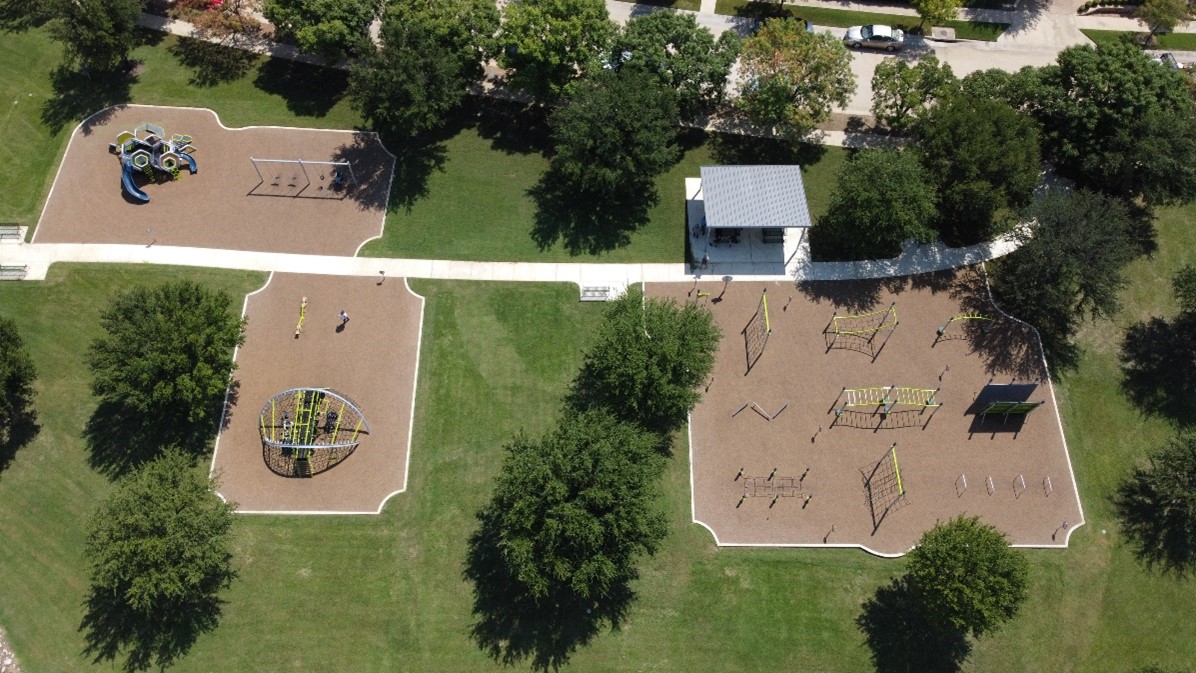
- What inclusive elements—ramps, transfer points, sensory play, music—will your design need to include? Absolutely, everyone, regardless of their abilities, deserves and benefits from play. Inclusivity in playground design is essential to ensure that all individuals, including those with physical disabilities, developmental disabilities like autism, sensory impairments, intellectual disabilities such as Down syndrome, and others, can engage in play activities comfortably and enjoyably. Moreover, the concept of inclusivity extends to family members, friends, and caregivers who accompany individuals with disabilities to the playground.
- What freestanding play elements will you incorporate? Classic playground equipment like swings, slides, and seesaws have timeless appeal and offer a variety of play experiences.
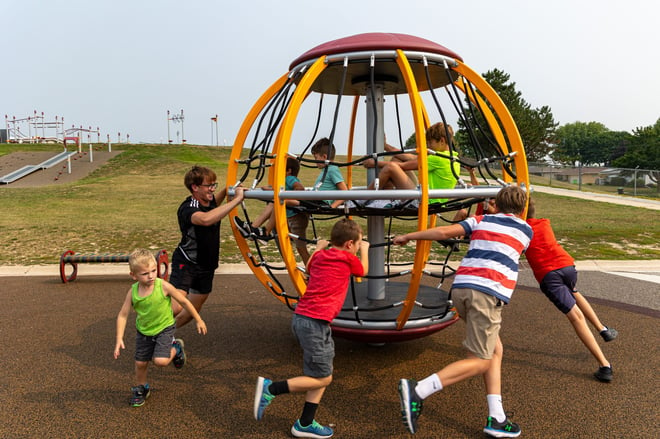
- Materials Matter - Playgrounds can be built using a variety of materials, but the most common materials used for building playgrounds are wood, metal, and plastic.
- Wood has been used to create playgrounds for generations. Wood does not conduct heat which makes it a great material for structures in warmer climates, but heat can soften the wood and make it splinter and warp. It can also rot and create housing for insects over time. Although wood is a great, natural material, it wears faster than other materials and requires frequent upkeep and maintenance.
- Metals are seen as the best material to use due to their strength, durability, and longevity. Compared to wood, metal does conduct heat, so adding a topcoat that provides greater protection against UV rays to the equipment is crucial to keep visitors from getting burned. This topcoat acts like a finish that makes the equipment more durable and less prone to corrosion; it comes in a multitude of different colors which allows you to create a unique and personalized playground. Galvanized steel is a popular metal used for some equipment and is highly durable. Metal is a more premium choice, but it does not require frequent maintenance like other materials do.
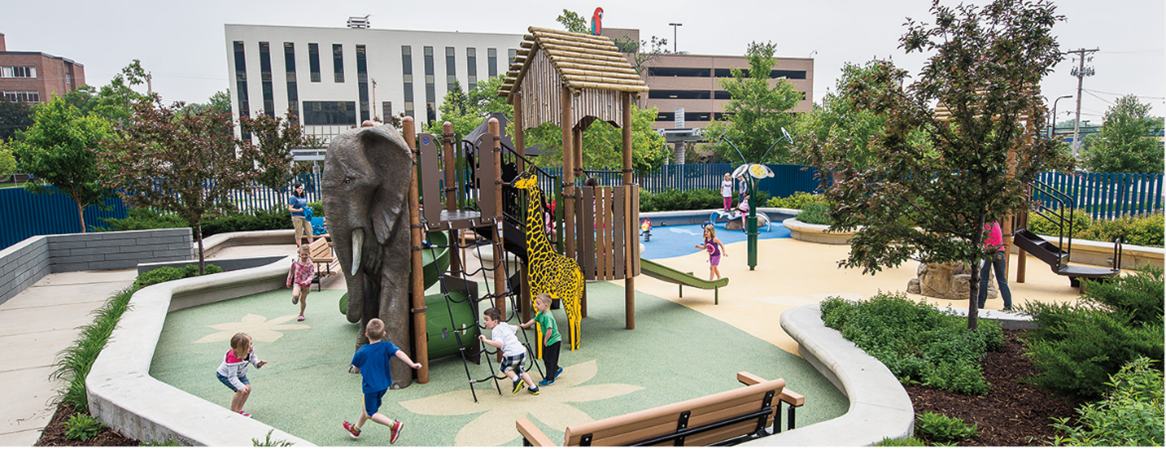
- There are a variety of different plastics that are used for playground equipment. Polyethylene is a durable and cost-effective plastic choice for playground use. Plastic is a poor heat conductor meaning that it is less likely to burn playground visitors, even on days with extreme heat. Although plastics are durable, they are not as durable as metal, but plastic can have a long lifetime if treated properly.
- Assess your ability to perform regular equipment maintenance. Metal and plastic equipment typically require less upkeep compared to wooden structures, so if you have less time to allocate to performing your maintenance routine, those might be the best materials for your playground. Metal and plastic equipment manufacturers typically recommend doing a visual maintenance check at least once a month while wood should be checked at least once a week.
- How much challenge do you want to incorporate into your design? Encouraging age appropriate, controlled risk-taking helps children develop resilience and problem-solving skills. Striking a balance between providing safe play environments and allowing children to engage in challenging, risk-related play is vital for their holistic development. It helps them build physical and emotional strength, independence, and the ability to manage fear and anxiety effectively. Encouraging outdoor and unstructured play in natural settings can be especially beneficial in fostering these positive outcomes.
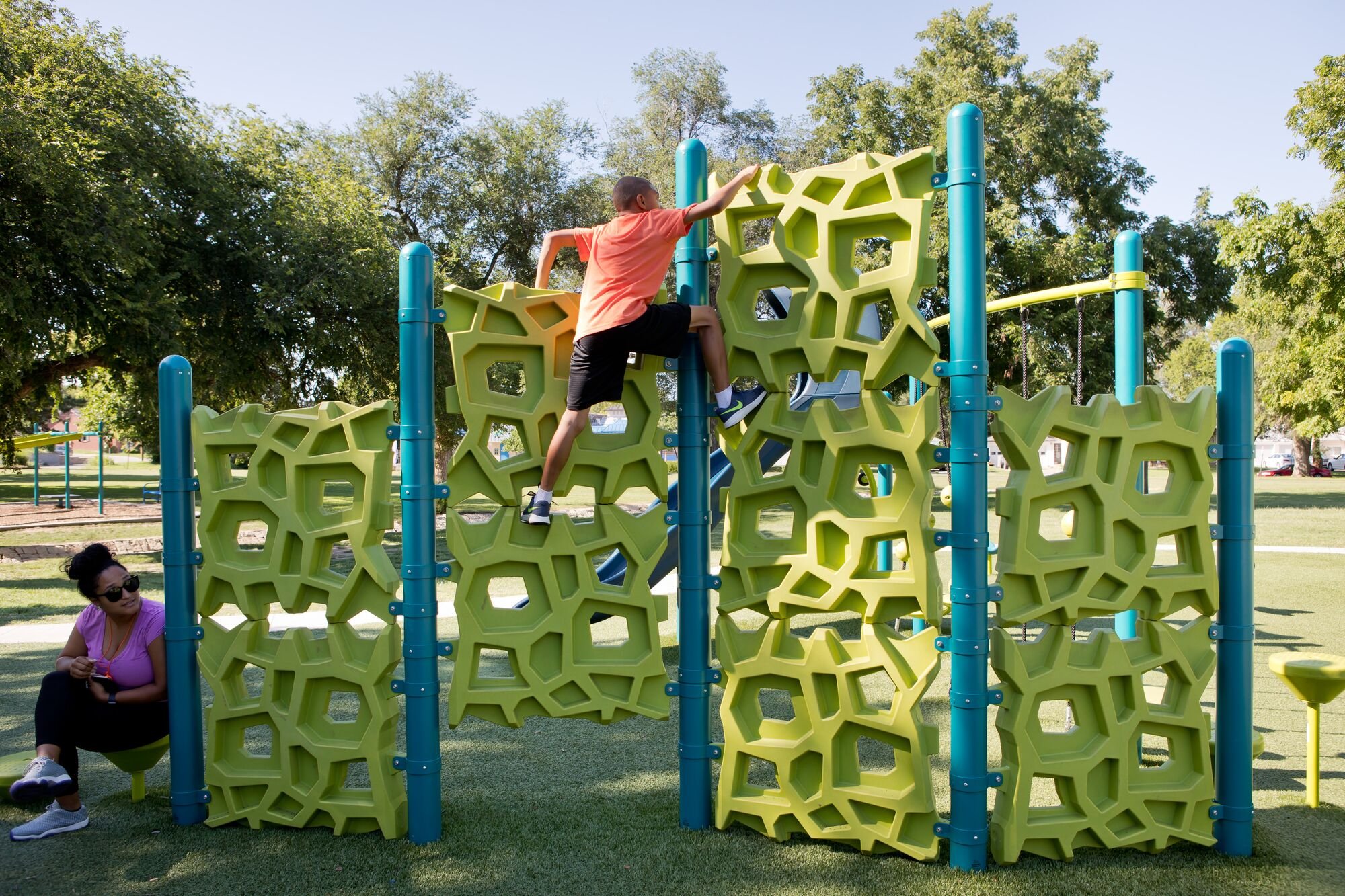
Conclusion
In conclusion, the process of designing and planning a playground is a multifaceted endeavor that encompasses various critical aspects, ranging from child development and safety to the creation of an inviting and engaging play space. We've delved into the significance of understanding community needs, conducting site assessments, and considering various design elements, materials, and equipment to ensure a successful playground project.
The ultimate goal is to create a playground that not only adheres to safety standards but also caters to the diverse needs of the community it serves. This process requires thoughtful planning, community involvement, and a deep understanding of the developmental benefits of play. Moreover, setting a comprehensive budget that covers not just initial equipment costs but also installation, surfacing, and long-term maintenance is paramount.
In collaboration with a playground representative, your dream playground vision can be transformed into a reality that enriches the lives of children in your community for years to come. Remember, designing your perfect playground is not a simple task, but with careful consideration and the right guidance, you can create a space where children can grow, learn, and play safely and joyfully.

